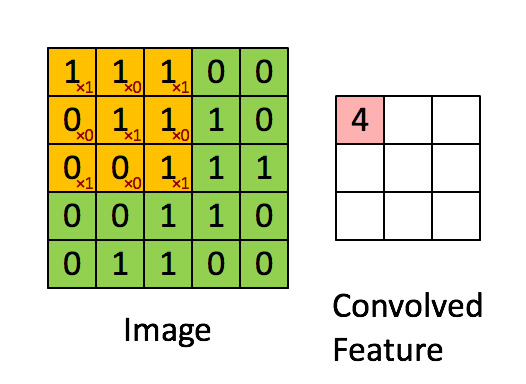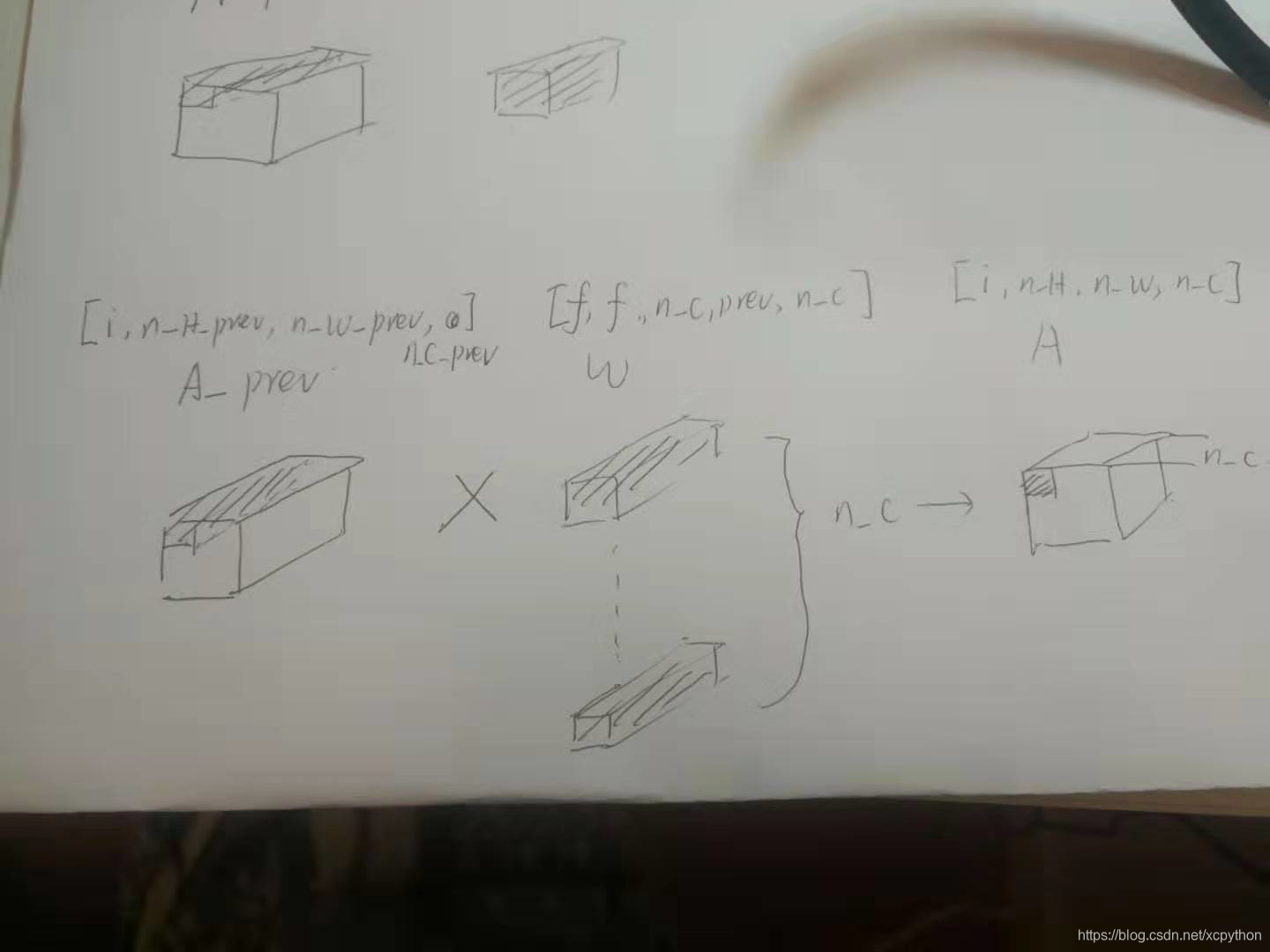这是我的第一篇技术博客!
在学习吴恩达老师的深度学习课程中的卷积神经网络的建模部分,我遇到了一个问题,就是在不使用深度学习框架的情况下做CNN的前馈时,搞不清楚循环和各变量的维度之间的关系,比如下面这个过程:


最好的方法其实就是把问题化简,看其最小、最本质的步骤是什么,就是如上图所示的过程,看输出层的单个例子、单个通道的特定一点
是怎么得来的,具体实现代码如下:
def conv_forward(A_prev, W, b, hparameters):
"""
Implements the forward propagation for a convolution function
Arguments:
A_prev -- output activations of the previous layer,
numpy array of shape (m, n_H_prev, n_W_prev, n_C_prev)
W -- Weights, numpy array of shape (f, f, n_C_prev, n_C)
b -- Biases, numpy array of shape (1, 1, 1, n_C)
hparameters -- python dictionary containing "stride" and "pad"
Returns:
Z -- conv output, numpy array of shape (m, n_H, n_W, n_C)
cache -- cache of values needed for the conv_backward() function
"""
### START CODE HERE ###
# Retrieve dimensions from A_prev's shape (≈1 line)
(m, n_H_prev, n_W_prev, n_C_prev) = A_prev.shape
# Retrieve dimensions from W's shape (≈1 line)
(f, f, n_C_prev, n_C) =W.shape
# Retrieve information from "hparameters" (≈2 lines)
stride = hparameters["stride"]
pad = hparameters['pad']
# Compute the dimensions of the CONV output volume using the formula given above.
# Hint: use int() to apply the 'floor' operation. (≈2 lines)
n_H = int(np.floor((n_H_prev-f+2*pad)/stride)+1)
n_W = int(np.floor((n_W_prev-f+2*pad)/stride)+1)
# Initialize the output volume Z with zeros. (≈1 line)
Z = np.zeros((m,n_H,n_W,n_C))
# Create A_prev_pad by padding A_prev
A_prev_pad = zero_pad(A_prev, pad)
for i in range(m): # loop over the batch of training examples
a_prev_pad = A_prev_pad[i,:,:,:] # Select ith training example's padded activation
for h in range(n_H): # loop over vertical axis of the output volume
# Find the vertical start and end of the current "slice" (≈2 lines)
vert_start = h*stride
vert_end =vert_start+f
for w in range(n_W): # loop over horizontal axis of the output volume
# Find the horizontal start and end of the current "slice" (≈2 lines)
horiz_start = w*stride
horiz_end = horiz_start+f
for c in range(n_C): # loop over channels (= #filters) of the output volume
# Use the corners to define the (3D) slice of a_prev_pad (See Hint above the cell). (≈1 line)
a_slice_prev = a_prev_pad[vert_start:vert_end,horiz_start:horiz_end,:]
# Convolve the (3D) slice with the correct filter W and bias b, to get back one output neuron. (≈3 line)
weights = W[:,:,:,c]
biases = b[:,:,:,c]
Z[i, h, w, c] = conv_single_step(a_slice_prev, weights,biases)
### END CODE HERE ###
# Making sure your output shape is correct
assert(Z.shape == (m, n_H, n_W, n_C))
# Save information in "cache" for the backprop
cache = (A_prev, W, b, hparameters)
return Z, cache
结束了
